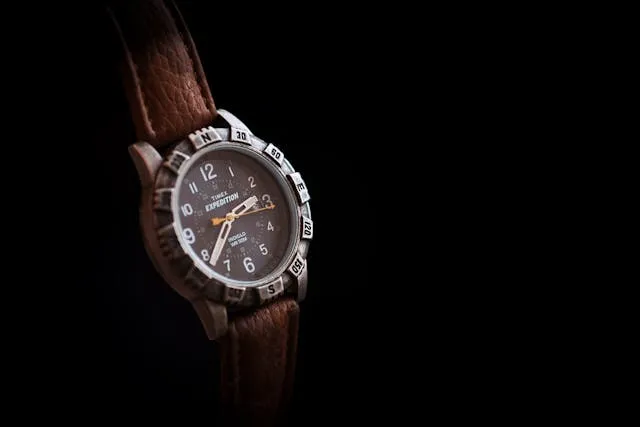Choosing the right plywood for your roof is more than just a construction decision. It is a long-term investment in the safety, efficiency, and durability of your home. With so many types, grades, and installation methods available, it can be overwhelming to know where to begin. This guide breaks down everything you need to know about selecting the best plywood for roofing, from material types to installation tips and long-term maintenance.
Also Read: What Is Neotra and Why It’s the Future of Stone Surfaces
Understanding Plywood: Types and Their Impact on Roofing
The Anatomy of Plywood: What Goes Inside?
Plywood is made from thin layers of wood veneer, each laid with its grain running perpendicular to the previous one. These layers are glued and pressed together using heat and pressure, creating a material with excellent strength and stability. This cross-grain construction helps plywood resist warping, swelling, and shrinking, which are common issues when wood is exposed to fluctuating weather conditions.
When choosing plywood for roofing, it is important to look beyond the surface. The type of adhesive used in the manufacturing process plays a big role in durability. Exterior-grade adhesives such as phenolic resin provide superior resistance to water damage compared to interior-grade glues. This is especially important for roofing, where constant exposure to rain, humidity, and temperature swings is unavoidable.
Different Types of Plywood: A Spectrum of Choices
Not all plywood is created equal. Each type offers unique advantages, and the right choice depends on your climate, budget, and roofing design.
- Softwood Plywood: Typically made from pine or fir, softwood plywood is affordable and lightweight. It works well in drier climates but may not withstand heavy moisture exposure.
- Hardwood Plywood: Made from stronger, denser woods like birch or oak, hardwood plywood offers superior durability and resistance to wear, though it comes at a higher price point.
- Engineered Plywood: Designed with enhanced properties such as moisture resistance or added structural strength, engineered plywood is a versatile option for challenging environments.
- Marine Plywood: The gold standard for roofing in humid or coastal regions. It is manufactured using high-quality hardwood veneers and waterproof adhesives, making it resistant to delamination, rot, and fungus.
Each type serves a purpose. For coastal homes, marine plywood is often the best investment. For budget-conscious projects in drier climates, softwood or engineered plywood may provide sufficient strength without overspending.
Grades and Their Significance: What You Need to Know
Plywood is graded based on its surface quality and intended use.
- Grade A: Smooth, sanded surfaces with virtually no defects. Ideal for visible areas or projects requiring a polished finish.
- Grade B: Slight imperfections but still smooth and durable.
- Grade C and D: Contain knots, splits, or blemishes. These are more cost-effective and suited for structural, hidden uses like roof decking.
In addition to surface grades, plywood is also labeled by exposure ratings:
- Exterior: Designed to withstand prolonged exposure to moisture and weather. Best for roofing.
- Exposure 1: Can handle limited moisture during construction but must remain dry afterward.
- Interior: Not suitable for roofing, as it cannot handle moisture.
Knowing both the grade and the exposure rating helps ensure you select plywood that can meet the demands of your specific project.
The Best Plywood Materials for Roof Longevity
Marine Plywood: The Ultimate Water Resistance
For maximum durability, marine plywood is hard to beat. Its waterproof adhesive and high-quality veneers ensure that even prolonged moisture exposure will not cause delamination or rot. This makes it ideal for coastal or high-rainfall regions, where roofs are under constant attack from humidity and salt air.
While the upfront cost of marine plywood is higher than other types, its long service life, often 25 years or more, makes it a cost-effective investment. Fewer repairs, better resistance to mold, and stronger structural performance all contribute to its reputation as the premium choice for roofing projects.
OSB vs. Plywood: Debunking the Myths
The debate between OSB (oriented strand board) and plywood is ongoing. OSB is made by compressing layers of wood strands with adhesives, creating a uniform board. It is generally more affordable than plywood and provides consistent thickness, which can simplify installation.
However, OSB tends to absorb water more readily than plywood, leading to swelling or loss of strength if left exposed to moisture for extended periods. Plywood, by contrast, dries faster and maintains structural integrity more reliably. For roofing, especially in wetter climates, plywood typically remains the safer choice.
Still, high-grade OSB with proper protective coatings can perform well in certain environments. The decision often comes down to budget, climate, and personal preference.
Cost vs. Quality: Finding the Right Balance
Roofing projects are expensive, and material costs can quickly add up. While it is tempting to cut corners with cheaper plywood, this can result in costly repairs down the road. Investing in higher-quality grades, such as exterior-rated or marine plywood, can extend your roof’s lifespan, improve energy efficiency, and reduce maintenance.
When calculating costs, consider the bigger picture. Durable plywood may save you money in heating and cooling by improving insulation and reduce the frequency of roof replacements. Long-term savings often outweigh short-term gains.
Installation Insights: Tips for a Flawless Roofing Project
Preparation is Key: Setting the Stage for Success
Before installing plywood, ensure the roof’s structure is ready. Check load-bearing capacity, slope, and alignment. Gather all materials, tools, and safety gear in advance to avoid unnecessary delays. Work should also be scheduled during stable weather to reduce the risk of water exposure during installation.
Common Mistakes: What to Avoid for a Durable Roof
- Improper Fasteners: Using nails or screws that are too short compromises structural strength. Always use roofing-specific fasteners appropriate for the plywood’s thickness.
- Poor Ventilation: Failing to account for attic ventilation can trap moisture, causing long-term damage.
- Incorrect Panel Layout: Not staggering plywood sheets can create weak points in the roof. Always overlap seams to distribute weight and stress evenly.
Attention to these details ensures a stronger, longer-lasting roof.
Tools of the Trade: Essential Equipment for Installation
Key tools for a successful plywood roofing project include:
- Circular saws for clean, accurate cuts
- Pneumatic nail guns for efficient fastening
- Measuring tools for precise layouts
- Safety gear such as harnesses, gloves, goggles, and helmets
- Scaffolding or sturdy ladders for safe roof access
Having the right equipment makes the job faster, safer, and more reliable.
Maintenance Matters: Keeping Your Plywood Roof in Top Shape
Regular Inspections: Spotting Issues Early
Check your roof at least twice a year and after severe storms. Look for cracks, water stains, mold growth, or loose edges. Pay special attention to flashing and drainage systems, as these are common areas for leaks.
Repairing Plywood: DIY or Professional?
Minor repairs like sealing small leaks or replacing one or two sheets can often be done by experienced DIYers. For more extensive damage such as widespread rot or compromised structural integrity, call a professional roofer. Their expertise ensures compliance with building codes and guarantees the safety of your home.
Protective Coatings: Enhancing Lifespan and Aesthetics
Applying sealants or waterproof coatings helps protect plywood from UV rays, moisture, and general wear. These coatings not only extend the lifespan of your roof but can also improve its appearance. Regular reapplication as part of routine maintenance adds years of durability to your roofing system.
Final Thoughts
The best plywood for roofing depends on your climate, budget, and long-term goals. Marine plywood offers unmatched durability in wet environments, while exterior-rated softwood or hardwood plywood provides reliable performance in most conditions. Though OSB has its place, traditional plywood remains the go-to choice for long-lasting roofs.
By understanding the different types, grades, and installation methods, and by committing to proper maintenance, you can ensure your roof remains strong, efficient, and reliable for decades.
Durability starts with the right foundation, and in roofing, that foundation is the plywood you choose.



